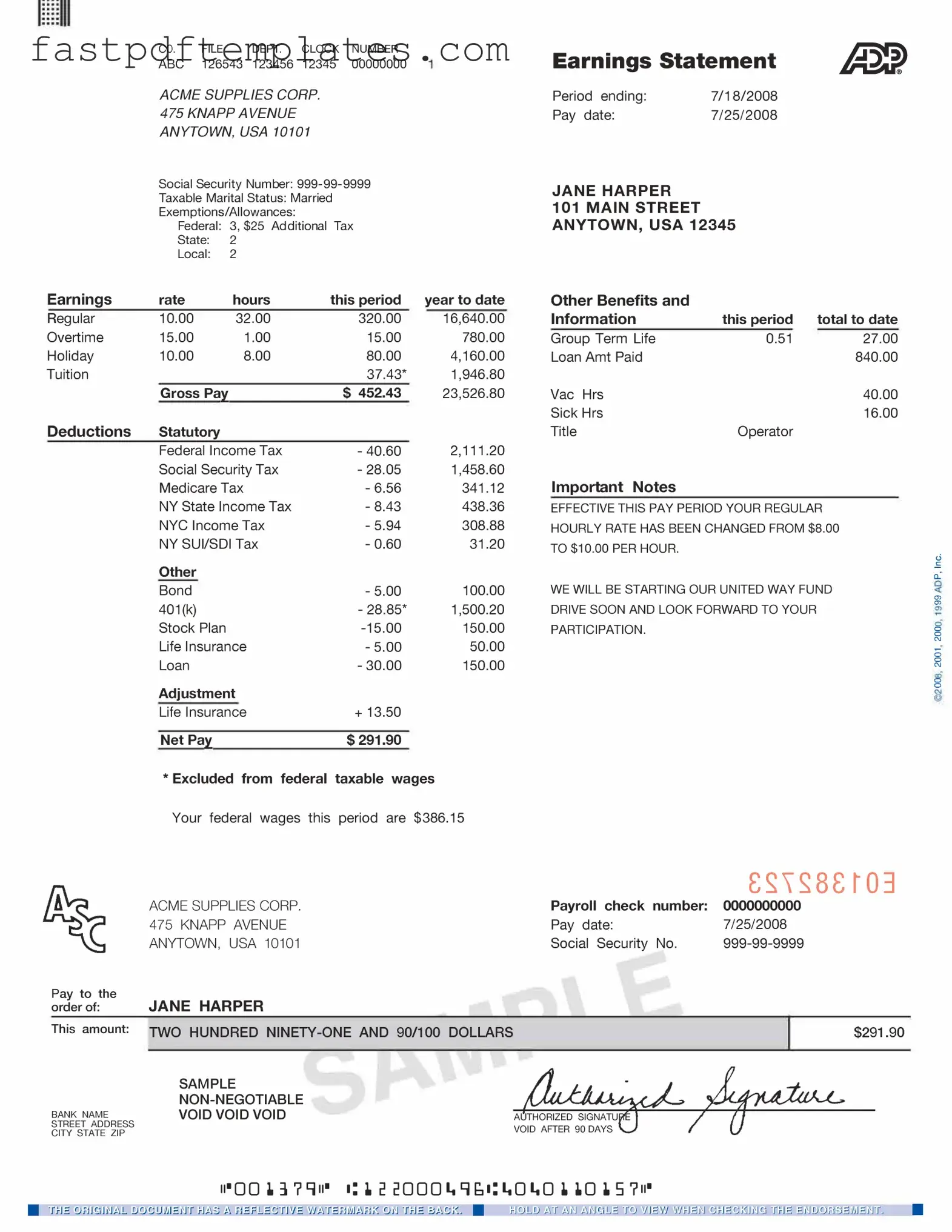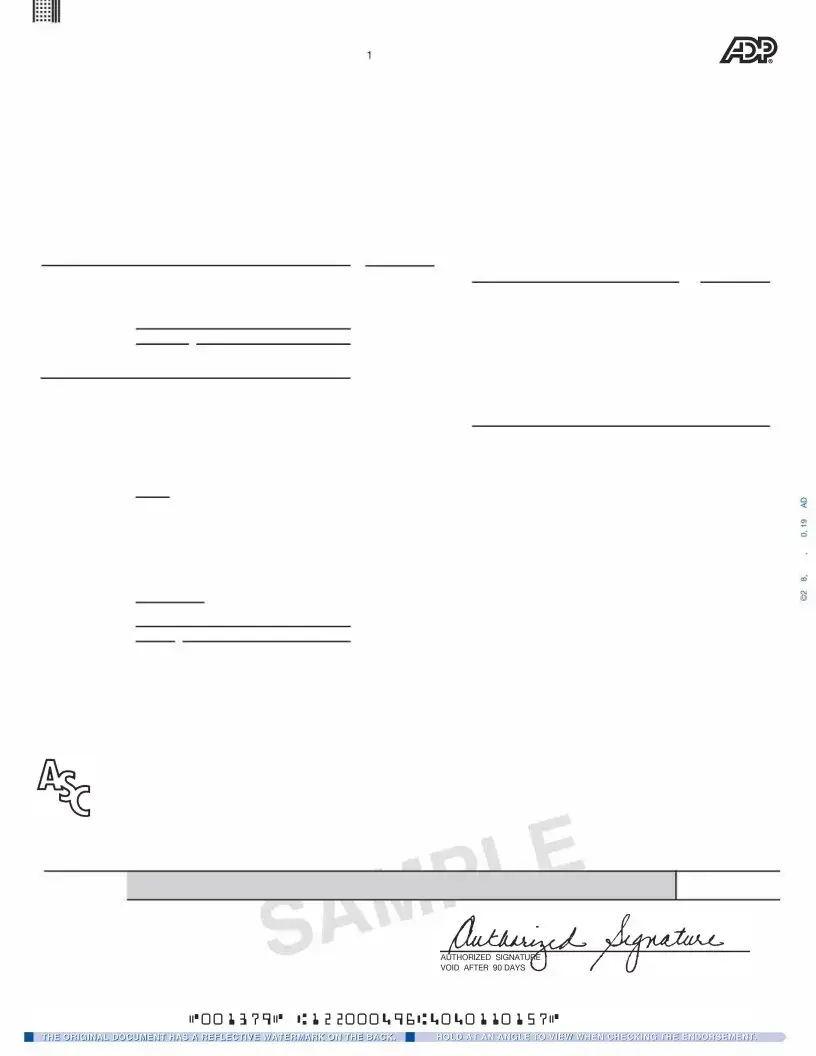The ADP Pay Stub is similar to the W-2 form, which is used by employers to report annual wages and taxes withheld for employees. While the pay stub provides a detailed breakdown of earnings for each pay period, the W-2 summarizes an employee's total earnings and tax contributions for the entire year. Both documents are essential for understanding an employee's income and tax obligations, making them crucial for personal financial planning and tax filing.
Another document that shares similarities with the ADP Pay Stub is the paycheck itself. The paycheck serves as the physical or electronic payment an employee receives for their work. Like the pay stub, it reflects the gross pay, deductions, and net pay. However, the paycheck is the actual payment method, while the pay stub provides a detailed account of how that amount was calculated, including any deductions for taxes, benefits, and other contributions.
The 1099 form also bears resemblance to the ADP Pay Stub, particularly for independent contractors and freelancers. While the pay stub details earnings for a specific pay period, the 1099 summarizes income received throughout the year from various clients or companies. Both documents help individuals track their earnings, but the 1099 is crucial for tax reporting, as it indicates income received outside of traditional employment.
The earnings statement is another document akin to the ADP Pay Stub. This statement is typically issued by employers on a regular basis and provides a summary of an employee's earnings, hours worked, and deductions. While the pay stub often includes more detailed information, such as year-to-date totals, the earnings statement serves a similar purpose by keeping employees informed about their compensation and any changes in their pay structure.
The direct deposit notification is also similar to the ADP Pay Stub in that it informs employees about their pay. When an employee opts for direct deposit, they receive a notification detailing the amount deposited into their bank account. This notification often includes information about deductions and taxes, similar to what is found on a pay stub, making it a useful tool for tracking income and financial planning.
Lastly, the payroll summary report can be compared to the ADP Pay Stub. This report is typically generated by the payroll department and provides a comprehensive overview of all employees' earnings and deductions for a specific pay period. While the pay stub is personalized for each employee, the payroll summary report aggregates this information for the entire workforce. Both documents serve to enhance transparency regarding compensation and deductions, aiding employees in understanding their financial standing within the organization.

